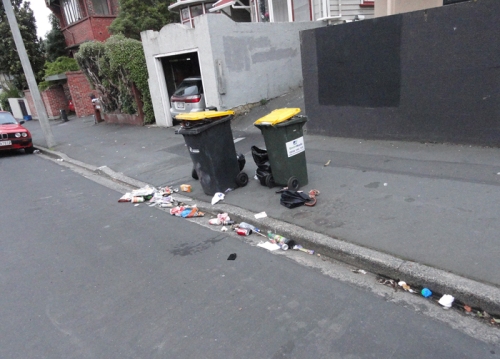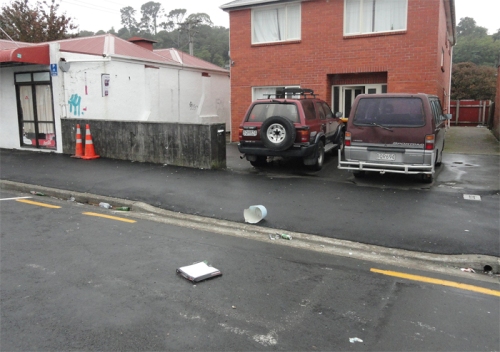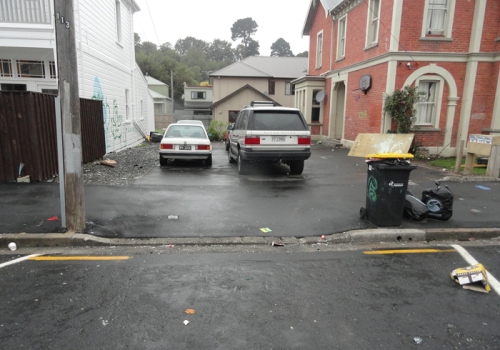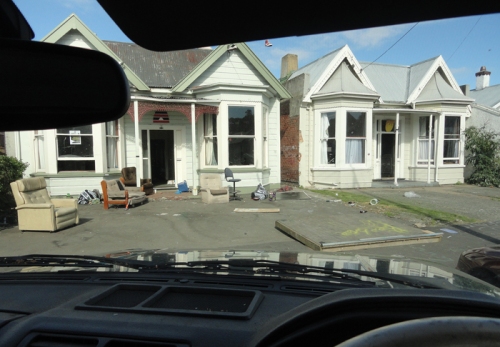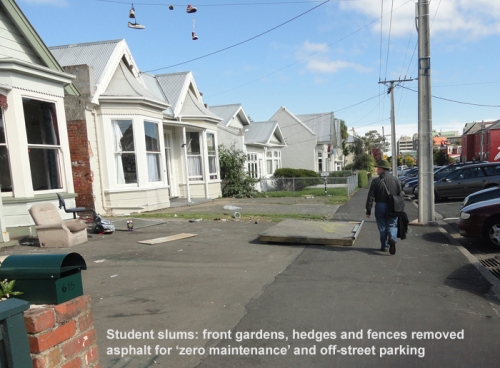
█ Proposed Second Generation District Plan (2GP)
https://2gp.dunedin.govt.nz/2gp/index.html
—
If you’re struggling with the Proposed 2GP webpages and how they tie together, whatifdunedin STRONGLY ADVISES you sight a paper copy of the full document at the DCC 2GP drop-in centre (11 George Street), DCC service centres or public libraries before setting out to write your individual or group submissions. Note you may also submit further submissions in discovery, utilise this opportunity fully.
DCC in providing the online Proposed 2GP “eplan” is depending on you The Public to ‘give up’ on the district plan document – to drive through the DEVELOPMENT CHANGE in effect, unopposed. Nothing could be clearer. Don’t let this happen. Talk to family, friends, colleagues, lawyers, planners, RMA professionals, anyone (!!) and hard grill the DCC chief executive, group and general managers, and City Planning officers as soon as possible to help frame your response(s).

Received.
Diane Yeldon
Submitted on 2015/10/03 at 6:54 pm
I have come to the sad conclusion that city planning is now just broken and unfixable. 2GP depends conceptually on the Spatial Plan and here are the Strategic Directions from the Spatial Plan (quoting):
The Spatial Plan is based on six key Strategic Directions: 1) A liveable city and 2) An environmentally sustainable and resilient city, (which) are supported by four strategic directions: 3) A memorable and distinctive city; 4) A vibrant and exciting city; 5) An accessible and connected city; and 6) A city that enables a prosperous and diverse economy. (ends)
Just as people say about using computers: GIGO (garbage in, garbage out), if you start a plan with GARBAGE, you can’t possibly end up with anything but garbage. 2GP just lifts this ‘vibrant’ and ‘exciting’ woolliness from the Spatial Plan and will give specific Rules supposedly derived from it the force of law in the new District Plan.
And no longer are explanations for District Plan Policies and, more critically, Rules required by law. So the local authority doesn’t have to justify the existence of a Rule at all, let alone in any accountable way. Rules can now exist just because they say so. (Definitely more authoritarian.)
If anyone wanted to understand what kind of city 2GP is likely to result in when operative, then a useful approach might be to work backwards from the Rules. I am quite certain that the Rules will not result in these green Utopian, ‘affluence and fun-for-all’ Strategic Directions becoming anything like a reality. Especially when you take into account how little money is likely to be around in both the private and public sectors to make some of these wish-list items happen.
More likely, there will be plenty of business for planning professionals and lawyers to try to clarify and argue how Rules etc might be applied to a specific site and proposed use. All trying to make sense (for a fee!) of what will appear to the vast majority of people as a chaotic and incomprehensible mess.
[ends]
█ For related posts and comments on the Proposed 2GP enter the term *2gp* in the search box at right.
—
Dunedin City Council
Public Notification of Proposed Second Generation Dunedin City District Plan
This item was published on 26 Sep 2015
The Resource Management Act 1991 (RMA) requires the Dunedin City Council (DCC) to prepare a district plan to manage Dunedin’s natural and physical resources to meet the needs of Dunedin’s current and future generations and to provide for their social, economic and cultural wellbeing. The DCC has prepared the Proposed Second Generation Dunedin City District Plan (2GP), which is proposed to replace the current and operative Dunedin City District Plan. The DCC is now notifying the Proposed 2GP for public submission pursuant to clause 5, schedule 1 of the RMA.
█ Submissions must be lodged before 5pm on Tuesday, 24 November 2015.
There are many differences between the current District Plan and the Proposed 2GP. The Proposed 2GP affects all properties in the DCC area and may change what you and your neighbours can do with your properties. We encourage you to take a look to see what it means for you.
In summary, here are some of the key changes. The Proposed 2GP:
● includes a new strategic directions section that sets out key issues for the city, ‘big picture’ outcomes to be achieved, and sets up the plan’s zoning and other methods
● includes new hazard management areas, where it is proposed to manage development to better protect people and property from natural hazard events
● identifies some new coastal and other landscape management areas where limitations on new buildings are proposed
● strengthens the rules for indigenous vegetation clearance
● increases the number of rural and rural residential zones, and increases the minimum site size for subdivision in most of the rural zones
● includes nine new medium density areas, where development density can be increased
● proposes a more enabling approach to earthquake strengthening and additions and alterations necessary for the re-use of heritage buildings
● includes two new residential heritage precincts (Queen Street and Arthur Street areas) and a reduction in the area of commercial heritage precincts
● makes it easier to build family flats in most zones to provide more housing options for extended families, particularly in response to an ageing population
● includes new rules related to public amenities and temporary activities, to enable smaller events to be held, and some public amenities to be built, without the need for resource consent
● manages the height of fences along the boundaries with roads and reserves to maintain a visual connection with these spaces, to improve safety and maintain amenity values
● reduces some on-site car parking requirements for residential properties and other activities to enable people to have more choice in deciding how much car parking is needed
● allows garages and carports to be built in the front yards of houses, with some limitations, rather than always requiring a resource consent.
—
█ WHERE TO GO FOR MORE INFORMATION
To understand in more detail how the Proposed 2GP affects you, we encourage you to check out the full version. The Proposed 2GP has been prepared as an electronic plan (eplan) and is most easily viewed online at http://www.2gp.dunedin.govt.nz.
A list of the material incorporated in the Proposed 2GP by reference, and details of where this material can be purchased, are also available at http://www.2gp.dunedin.govt.nz and form part of this public notice. This material is available for inspection at the 2GP drop-in centre, 11 George Street, Dunedin.
Printed copies of the Proposed 2GP and reports prepared under section 32 of the RMA are available for inspection until 5pm, Tuesday 24 November at:
● the 2GP drop-in centre, 11 George Street, Dunedin, 8.30am to 5pm, Monday to Friday.
● public libraries and service centres at Dunedin, Middlemarch, Mosgiel, Port Chalmers, Blueskin Bay (Waitati) and Waikouaiti.
At our drop-in centre, DCC staff will be available to answer questions about the Proposed 2GP and help you understand how to make a submission. Alternatively, you can call 477 4000.
█ Community presentations will also be held as follows:
MOSGIEL: Tuesday, 13 October, 7 – 9pm
Lounge Room, Mosgiel Coronation Hall, 97 Gordon Road
MIDDLEMARCH: Thursday, 15 October, 7 – 9pm
Strath Taieri Community Centre, 11 Swansea Street, Middlemarch
PORTOBELLO: Tuesday, 20 October, 7 – 9pm
Portobello Hall, Portobello Road (Latham Park)
PORT CHALMERS: Thursday, 22 October, 7 – 9pm
Port Chalmers Town Hall, Grey Street
BRIGHTON: Tuesday, 27 October, 7 – 9pm
Ocean View Hall, 812 Brighton Road, Dunedin
WAIKOUAITI: Thursday, 29 October, 7-9pm
East Otago Events Centre, Main Road, Waikouaiti.
—
█ LEGAL EFFECT
The Environment Court has ordered that the rules listed in Table 1 below have immediate legal effect from notification of this proposed plan ([2015] NZEnvC 165). As part of this order the Court has stated that any person affected by it may apply to the Environment Court to have this order set aside in respect of part or all of any of the rules in Table 1. Any application to have the order set aside is required by the Environment Court to be supported by a full explanatory affidavit and sent to the Environment Court in Christchurch and to the DCC.
Table 1: Rules that have immediate legal effect (RMA s86D)
 [click to enlarge]
[click to enlarge]
There are some rules that the RMA deems to have legal effect when the proposed plan is notified (s86B(3)). These rules protect or relate to water, air, or soil (for soil conservation); or protect areas of significant indigenous vegetation; or protect areas of significant habitats of indigenous fauna; or protect historic heritage; or provide for or relate to aquaculture activities. The Council has resolved that they will only have legal effect once the Proposed 2GP is made operative. The rules are listed at http://www.2gp.dunedin.govt.nz and form part of this public notice. The rules are also identified in the 2GP. The remainder of the rules in the Proposed 2GP will not have legal effect when the plan is notified. These rules will have legal effect when decisions have been made on submissions, unless the RMA deems any rules to be operative earlier.
—
█ SUBMISSIONS
Any person may make a submission on the Proposed 2GP (subject to clause 6(4), schedule 1 of the RMA, which limits submissions relating to trade competition).
To make a submission please go to http://www.2gp.dunedin.govt.nz. We encourage you to make an online submission using the form and guidelines on the website. Submissions may also be made in hard copy. Submissions must be made in the prescribed form (see Form 5, Schedule 1 RMA (Forms, Fees and Procedure) Regulations 2003) and state whether or not you wish to be heard. Submission forms can be downloaded, filled out and submitted at the above website or picked up in hard copy from the drop-in centre.
For written submissions:
POST TO: Dunedin City Council, PO Box 5045, Moray Place, Dunedin 9058 – Attention Submission on 2GP
DELIVER TO: DCC Customer Services Agency, Ground floor, Civic Centre, 50 The Octagon, Dunedin – Attention Submission on Proposed 2GP
EMAIL TO: planning @dcc.govt.nz
█ Submissions must be lodged before 5pm, Tuesday, 24 November 2015.
After submissions have closed, the DCC will prepare a summary of submissions and publicly notify the availability of that summary.
There will be an opportunity for:
● any person representing a relevant aspect of the public interest;
● any person that has an interest that is greater than that of the general public; and
● the DCC
to make a further submission either supporting or opposing a submission or submissions already made.
If any person making a submission asks to be heard in support of his or her submission, a hearing must be held.
The Council will give its decision on the Proposed 2GP (including its reasons for accepting or rejecting submissions). People that have made a submission on a provision have the right to appeal any decision related to that provision, except for if a submission seeks to withdraw the whole proposed plan.
Public Notice (PDF, 39.5 KB)
A copy of the public notice as a pdf document
Contact DCC on 477 4000.
DCC Link
—
Posted by Elizabeth Kerr
![Dunedin Jan-03 [flyinn.co.nz] 1](https://dunedinstadium.wordpress.com/wp-content/uploads/2013/06/dunedin-jan-03-flyinn-co-nz-1.jpg?w=500&h=412) Dunedin Jan 2003. Image: flyinn.co.nz
Dunedin Jan 2003. Image: flyinn.co.nz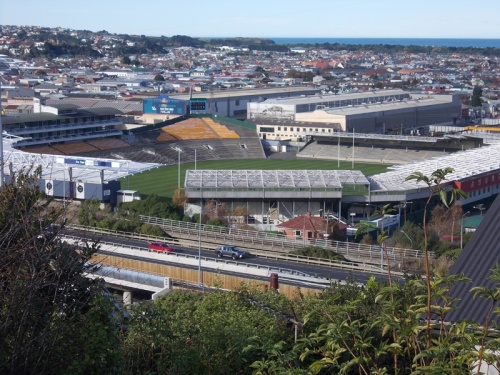 Carisbrook May 2013. Image: Rob Hamlin
Carisbrook May 2013. Image: Rob Hamlin 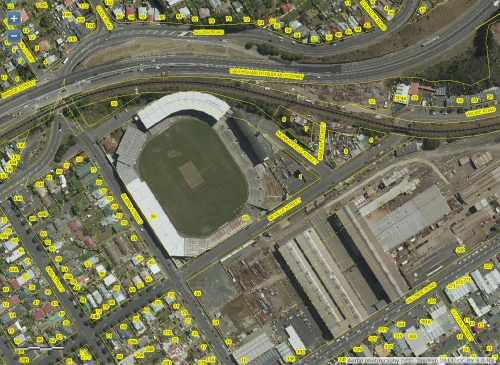 DCC Webmap – Carisbrook, South Dunedin JanFeb 2013
DCC Webmap – Carisbrook, South Dunedin JanFeb 2013
![Figure 1. Sea Level measured at Port Chalmers via PSMSL Data Explorer [psmsl.org]](https://dunedinstadium.wordpress.com/wp-content/uploads/2016/04/figure-1-sea-level-measured-at-port-chalmers-via-psmsl-data-explorer-psmsl-org.jpg?w=500&h=205)
![Figure 2. Average temperatures at Musselburgh [cliflo.niwa.co.nz]](https://dunedinstadium.wordpress.com/wp-content/uploads/2016/04/figure-2-average-temperatures-at-musselburgh-cliflo-niwa-co-nz.jpg?w=500&h=419)



![infrastructure-development [openspaceconsult.com] tweakedby whatifdunedin 1](https://dunedinstadium.wordpress.com/wp-content/uploads/2016/01/infrastructure-development-openspaceconsult-com-tweakedby-whatifdunedin-1.jpg?w=500)
![drawing [floodofideas.org.au]](https://dunedinstadium.wordpress.com/wp-content/uploads/2016/01/drawing-floodofideas-org-au.jpg?w=500&h=373)











![Proposed 2GP graphic [ODT files - tweaked by whatifdunedin]](https://dunedinstadium.wordpress.com/wp-content/uploads/2015/10/proposed-2gp-graphic-odt-files-tweaked-by-whatifdunedin.jpg?w=500&h=440)



![DCC appointees to district plan [Douglas Field]](https://dunedinstadium.wordpress.com/wp-content/uploads/2015/10/dcc-appointees-to-district-plan-douglas-field.jpg?w=500&h=383)
![Dunce = DCC [via cliparts.co]](https://dunedinstadium.wordpress.com/wp-content/uploads/2015/09/dunce-dcc-via-cliparts-co.png?w=197&h=300)



